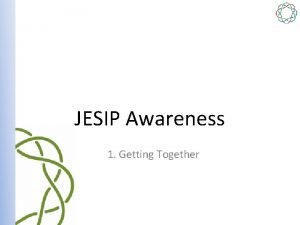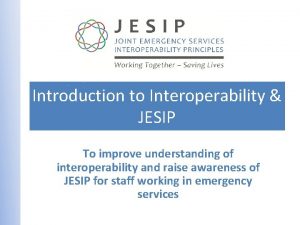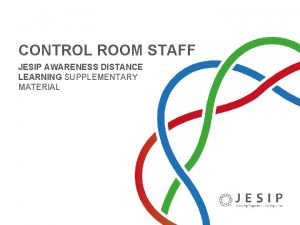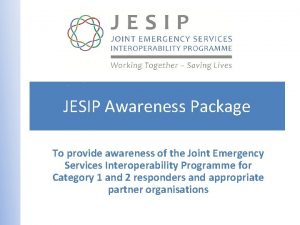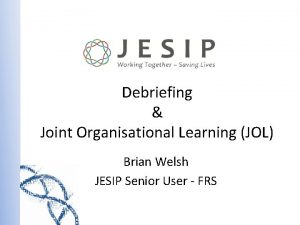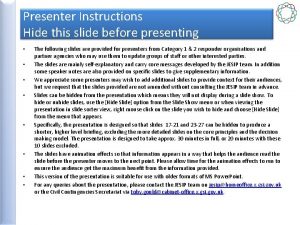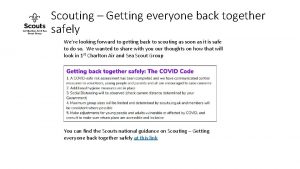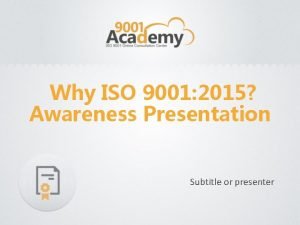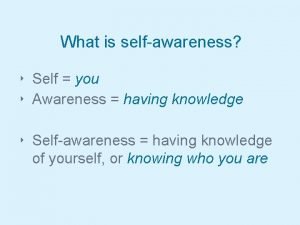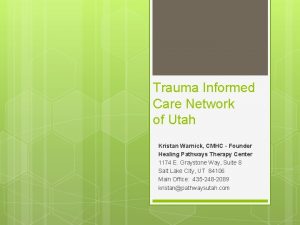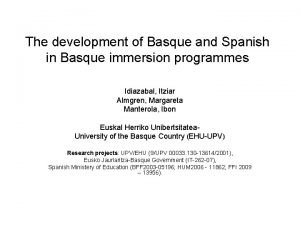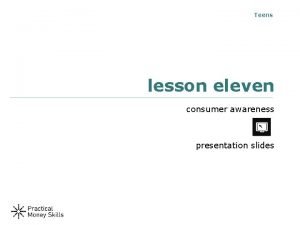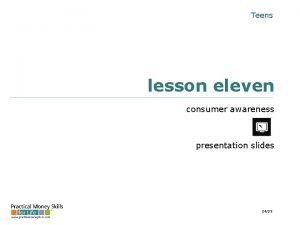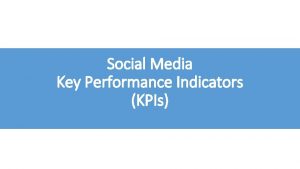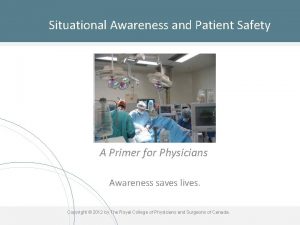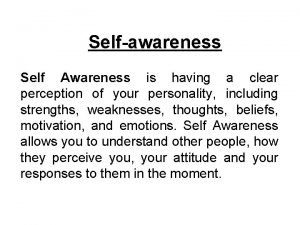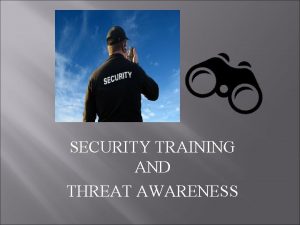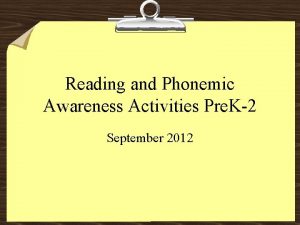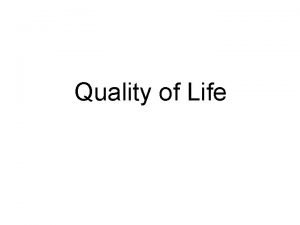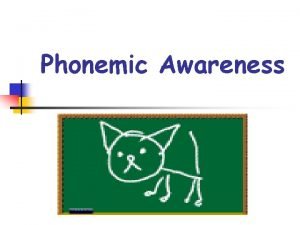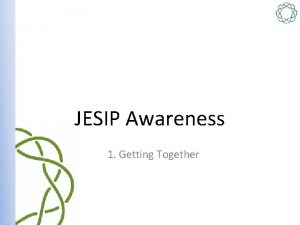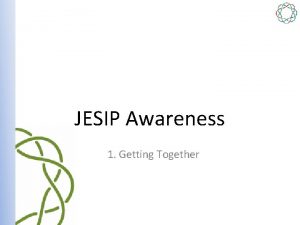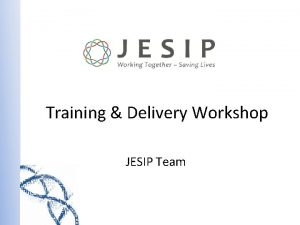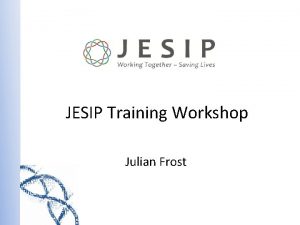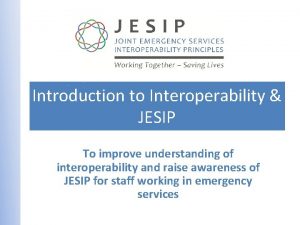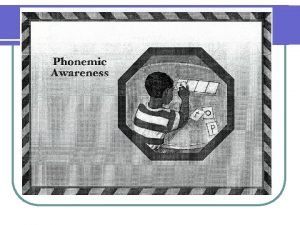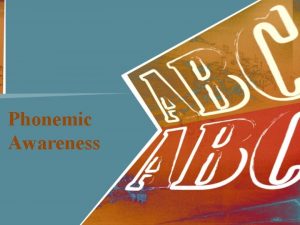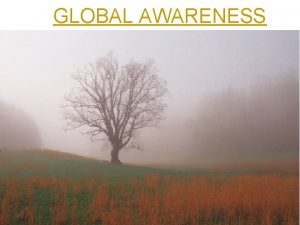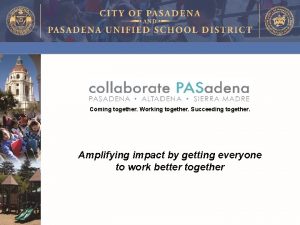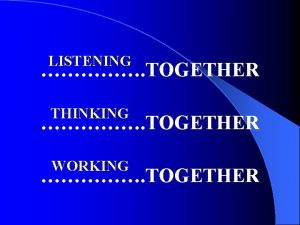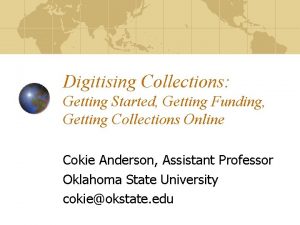JESIP Awareness 1 Getting Together Getting Together Does

































- Slides: 33

JESIP Awareness 1. Getting Together

Getting Together Does emergency and crisis management require special skills and/or attributes? How can we develop ourselves and our colleagues for this? Emergency management involves team, organisational and multi-agency working: how well do we work across boundaries and what problems might emerge?

Introducing JESIP began with a focus on the blue light emergency services. It developed to include all emergency responders. Today these principles apply to all agencies involved in some way in responding to incidents in the UK.

What is Interoperability? It means working together smoothly and effectively. The formal definition is ‘the extent to which organisations can work together coherently as a matter of routine’.

What is JESIP All About? Its about improving the way we all work together when responding to incidents so we can get better at saving lives and reducing harm.

Major Incidents A major incident is an event or situation with a range of serious consequences which requires special arrangements to be implemented by one or more emergency responder agency. JESIP is about good practice at all incidents - not just major ones.

Who can declare a Major Incident? It could be you! Know what the policy is in your agency for declaring a major incident

Why do we need to declare a Major Incident? Agencies will respond to major incidents differently depending on their responsibilities and resources. If a major incident is not declared quickly enough it can lead to problems co -ordinating a joint response.

Working at the Scene You are at this incident. In this situation you will need to work together with other responders to save lives and reduce harm. How?

Key Principles

Key Principles Through good co-location, communication and co-ordination you are more likely to achieve the remaining two principles: Joint Understanding of Risk and Shared Situational Awareness

JESIP App Prevention

JESIP Awareness 2. M/ETHANE

What is it? A standard way to share important information about an incident in a clear and consistent way

Why do I need it? Put yourself at the scene of this incident, you are one of the first emergency responders to arrive. What might you be thinking or feeling? …. . what are you seeing?

Think M/ETHANE

Building a bigger picture M/ETHANE is a reporting model which supports the development of Shared Situational Awareness Your own and other responder agencies need your M/ETHANE report at the earliest opportunity for communication, coordination, co-location and the joint understanding of risk Your M/ETHANE report is important in the early development of shared situational awareness amongst all responders

Shared Situational Awareness – M/ETHANE You should not hesitate to send a M/ETHANE report if you are unsure that the incident in front of you is ‘major’ by definition


JESIP Awareness 3. Seeing The Same Picture


Shared Situational Awareness What is it? It is a common understanding of the circumstances, immediate consequences and implications of the emergency, along with an appreciation of the available capabilities and the priorities of all responder agencies

Creating Shared Situational Awareness Three Key Questions What? What is happening? So what? What does it mean? What if. . ? Now think ahead

Establishing Shared Situational Awareness What is happening at the moment and what is being done about it? What might happen next? Or in the future? I need to get everybody’s understanding of this situation so nothing is missed moving forward What does all that mean and what effects will it have?

Joint Decision Model

Levels of Command The Big Picture Making it happen Doing it

Why is joint understanding of risk essential? This flooding scenario is a Major Incident.

Multi-Agency Resilience Ambulance Police Public Health England Ports Transport Highways England Fire & Rescue Environment Agency Airports Coastguard Local Authority Voluntary Sector Military Media Central Government Health & Safety Executive Water Power

JESIP Awareness 4. Looking Back, Moving Forward

Looking Back, Moving Forward It is several hours on from the time you attended this incident. You have been stood down from the scene and are back at the office. The incident is now entering the recovery phase which may take a long time. You are thinking about your own role during the response to this incident, people from other responder agencies will be doing the same.

Looking Back, Moving Forward Did everybody know what they were doing? Did we do a good job? Did I do everything? What made things challenging? Did we have a near miss? Could we have done something better?

Joint Organisational Learning

You have now reached the end of the JESIP Awareness package Further information can be found on the JESIP website at www. jesip. org. uk
 Shared situational awareness jesip
Shared situational awareness jesip Jesip 5 principles
Jesip 5 principles Jesip
Jesip Privacy awareness and hipaa privacy training cvs
Privacy awareness and hipaa privacy training cvs Getting ahead
Getting ahead Jesip
Jesip Jesip debrief
Jesip debrief Jesip tabards
Jesip tabards Joint decision model
Joint decision model Getting everyone back together safely
Getting everyone back together safely What does cultural awareness mean
What does cultural awareness mean The fur coat setting
The fur coat setting Phrenology
Phrenology Opvoedbelasting
Opvoedbelasting How does the sun moon and earth work together
How does the sun moon and earth work together How does the sun moon and earth work together
How does the sun moon and earth work together Knapp's stages of coming together
Knapp's stages of coming together Iso 9001:2015 awareness training ppt
Iso 9001:2015 awareness training ppt Why is self-awareness important
Why is self-awareness important Trauma awareness and treatment center utah
Trauma awareness and treatment center utah Metalinguistic awareness
Metalinguistic awareness Metalinguistic awareness
Metalinguistic awareness Lesson eleven quiz consumer awareness
Lesson eleven quiz consumer awareness Lesson eleven consumer awareness
Lesson eleven consumer awareness Kpis de awareness
Kpis de awareness Elements of situational awareness
Elements of situational awareness Is having a clear perception of your personality
Is having a clear perception of your personality Security training and threat awareness
Security training and threat awareness Ncic hosts restricted files and non-restricted files
Ncic hosts restricted files and non-restricted files Phoneme addition activities
Phoneme addition activities Was it sexual abuse quiz
Was it sexual abuse quiz Levels of communication
Levels of communication Phonological awareness continuum chart
Phonological awareness continuum chart Phonemic awareness definition
Phonemic awareness definition
